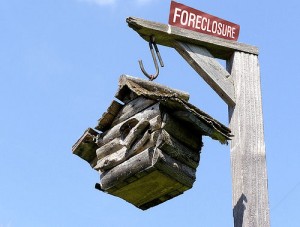Bankruptcy stops a foreclosure in its tracks.
The filing triggers the automatic stay which stops all creditors from any action to collect their claim including foreclosure.
But the duration of the stay differs between the chapters of bankruptcy.
Chapter 7
In Chapter 7, the stay lasts only as long as the property is not abandoned by the trustee, as either valueless to the estate, as exempt, or until the case is closed.
A creditor secured by the house can seek relief from the stay to complete the foreclosure if there is danger that the secured claim will become greater than the value of the security during the bankruptcy.
Liens survive bankruptcy, unless there is a particular statute that allows the court to void the lien. Since the creditor’s lien is not eliminated by the bankruptcy, Chapter 7 provides temporary relief from foreclosure, but no lasting solution.
Chapter 13
In contrast, in Chapter 13 the stay lasts as long as the case is pending.
Chapter 13 is designed to allow debtors to cure defaults in their home mortgages by paying the arrearage over as long as 3 to 5 years.
If you are able to pay the regular monthly payment and contribute enough money to a Chapter 13 plan to bring the mortgage current by the end of the plan, you can save the house.
Chapter 13 may also protect the house from foreclosure while a loan modification is considered.
What next?
So, bankruptcy can clearly stop the foreclosure in the short term. Whether it’s a long term solution depends on your goals and your ability to cure the underlying problem.
Consider, too, whether it makes any sense to keep the house.
Read more
Tax consequences of foreclosure vs. bankruptcy
When the automatic stay is lifted
Image courtesy of etgeek.

